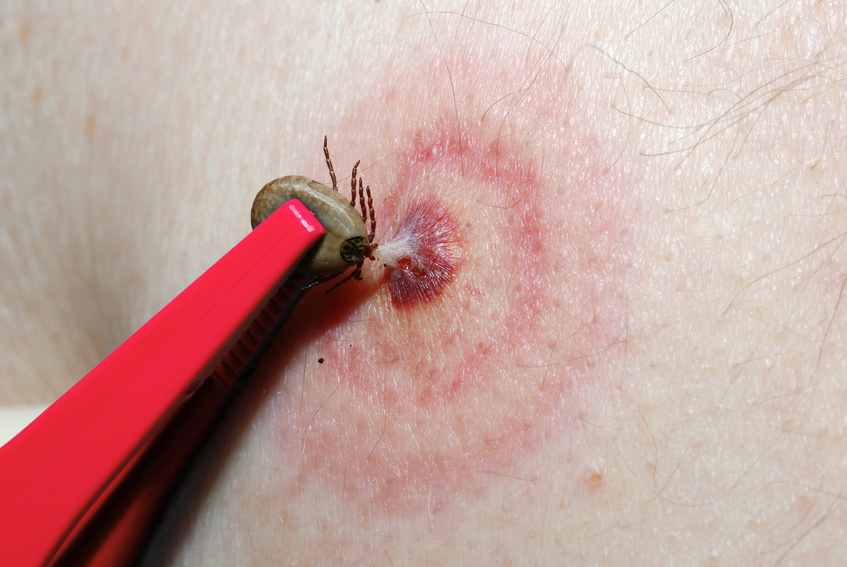Symptoms of an Infection with Lyme Disease
Lyme disease is a so-called multi-systemic disorder. This means it can affect the whole body and produce a wide variety of symptoms. The multitude of symptoms triggered by Lyme disease may also be identical to those characteristic of other diseases, which means that it is often very difficult to make a rapid, accurate diagnosis.
Erythema migrans - the first sign of an infection with Lyme Disease
About half the people infected develop a marked red patch around the site of the tick bite. This is quite different from the red patches associated with mosquito bites or wasp stings, for example.The skin infection which occurs after a tick bite is usually circular and spreads out over time while growing paler in the middle, giving the impression of a ring. This can be an early indicator of Lyme disease, but doesn't necessarily appear in everyone infected.
Over time, this erythema migrans may be joined by other symptoms. These can be divided into two stages:
 Photo: Falk/fotolia.com
Photo: Falk/fotolia.com
1st stage: early manifestation - the Borrelia bacteria spread throughout the body
Over the days or weeks following infection, the patient may develop general, unspecific symptoms of disease such as fever, conjunctivitis, headaches, myalgia and swollen lymph nodes.
2nd stage: late manifestation - the Lyme disease becomes chronic
Chronic and more severe symptoms can appear months or even years after the tick bite. These may include burning pain and inflammation of the joints and the entire nervous system including the spinal cord and brain. Paralysis, neurological deficits, depression, impaired consciousness, myocarditis, cardiac arrhythmia, Lyme arthritis, visual disturbances and chronic fatigue may also appear.
The wide spectrum of Borrelia bacteria is believed to be responsible for the diversity of the symptoms. One or more pathogens can be transmitted to the human host in just one tick bite. Co-infections with other tick-borne bacteria may also occur.



